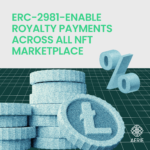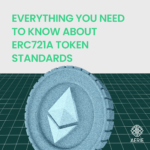WEEKLY MARKET WRAP – 16 OCTOBER 2022
Market Update
With inflation showing no signs of letting up, Thursday’s hotter-than-expected consumer-price index report for September, which reflected worrisome jumps in the core readings that exclude food and energy and produced the seventh straight 8%-plus annual headline reading. Until now, many in financial markets have struggled to adjust to the likelihood of just a roughly 4% fed-funds rate by November, which would be the highest level in more than a decade.
Expectations are building in financial markets for a 5% fed-funds rate by March that’s likely to bring more volatility across equities, bonds and most surely extend the crypto winter. Recently treasury Secretary Janet Yellen had voiced concerns about the potential for problems related to thin trading conditions in the market for U.S. government debt, raising concerns about a loss of adequate liquidity in the market.
In the coming months economists are expecting a 6% fed-funds rate at some point, which will exacerbate global recessionary headwinds and keep the dollar strong. The first thing that could break in the global economy will be Europe as it might go into a severe downturn although raising rates is inevitable considering that U.S. inflation is soon getting out of hand. With the severity of the Crypto Winter growing or Ethereum Co-founder Lubin puts it “”So we remain the tail that is being waged by a very sick dog: the global macro situation”; it seems that it will be not before 12-18 months before we see more investors and crypto enthusiast returns to the space.
However, all major companies are now focusing on product enhancements and better market fitment. Despite the crypto winter and investors staying away from crypto as an asset-class; Ethereum Decentralized Exchange – Uniswap, raised $165mm in fresh funding. This funding was led by Polychain Capital and other participants in the funding round being a16z crypto, Paradigm, SV Angel, and Variant.
Stablecoin – best use case of crypto and soft target for regulators
Stablecoins have emerged as the life-blood of the crypto industry. At a hefty $150 billion in total market capitalization, even after the collapse of Terra’s algorithmic stablecoin UST earlier this year, they may be one of crypto’s best current use cases. With the top two USDT and USDC having a market capitalization of $68 and $45 billion respectively. The two have grown in size by 353% and 1,400%, respectively, in just two years. Compound that launched in 2018, is one crypto’s first decentralized borrowing and lending platforms that allows users earn yield on their idle tokens or take out crypto-backed loans.
Today one of their largest borrowing market is for Circle’s USDC stablecoin. Any individual be it retail, hedge fund, exchange or Web3 business, there is and will always be a need for stablecoin; as it is a cheaper and faster way to transfer money.
With its growing prominence regulators are beginning to zero in on stablecoins as the route through which to regulate the entire industry. Citing the main reason as lack of regulation could hurt the ordinary investor and the entire financial system. Regulatory scrutiny has primarily revolved around transparency as well as determining how these assets could affect traditional financial markets. Tether, for example, has faced years of negative attention due to how opaque the firm has been about its reported 1:1 backing with the U.S. dollar. This lack of clarity has improved some over the years, with Tether now delivering monthly asset attestations; but the stablecoin issuer has never worked with a “Big Four” accounting firm to date. Circle has battled similar issues and now issues a regular attestation.
Tether now commercial paper free Tether has completely eliminated commercial paper from its reserves. The largest stablecoin announced this milestone in a blog post that it would replace those investments with U.S. Treasury Bills. In a move towards transparency the largest stablecion has replaced all commercial paper much of which was rumored to Chinese and Asian and were being traded at a 30% discount.
Commercial paper is unsecured, short-term debt issued by a corporation. Tether earlier this year had committed that it would reduce its commercial paper holdings and has gradually done so this year. Is this also a move as a result of pressure from regulators towards more transparency and accountability. USDT runs on a number of different blockchains, and as the most traded cryptocurrency, it is considered by many to be the backbone of the crypto economy.
Bitcoin mining in Texas – regulators cracking down on electricity usage Is Texas becoming a “deregulated safe harbor” for crypto mining firms, with the state’s cheap power and laissez-faire regulation? These are the latest concerns being raised about the potential for mining operations adding to the stress on the state’s power grid. Law-makers are not investigating if companies are taking advantage of the subsidies by not mining during peak hours and profiting more by way of subsidies since the value of Bitcoin has also dropped in the last couple of months.
In simple terms, the Bitcoin miners make money from mining that produces major strains on the electric grid: and during peak demand when the profitability of continuing to mine decreases, they then collect subsidies in the form of demand response payments when they shut off their mining operations and do nothing. Law-makers are also opposing the carbon foot print of such activities and effect on climate change and our environment.
Energy-Efficient Bitcoin mining hardware
Cryptography hardware technology company Fabric Systems raised $13 million in a seed round from investors to build energy-efficient Bitcoin mining hardware. The money came from early-stage investment firm Metaplanet, run by Skype co-founder Jaan Tallinn, crypto exchange Blockchain.com, and venture firm 8090 Partners. Silicon Valley-based Fabric Systems will use the money to build an “immersion-native” Bitcoin miner and a general-purpose accelerator for cryptographic algorithms.
The cryptographic accelerator is intended to make calculations faster and more efficient on the blockchain, allowing for advanced cryptographic algorithms such as zero knowledge proofs (ZKP)— a cryptography method to prove that something is known without revealing the known information directly. The tech was first used by the privacy coin Zcash but Fabric Systems said the plan is for the accelerator to be used by other industries outside of crypto—such as real estate.
“Immersion-native” machines refers to Bitcoin miners which are dunked in a thermally-conductive liquid to cool them down and make them more energy efficient, because the process allows for more BTC to be mined with fewer machines.









